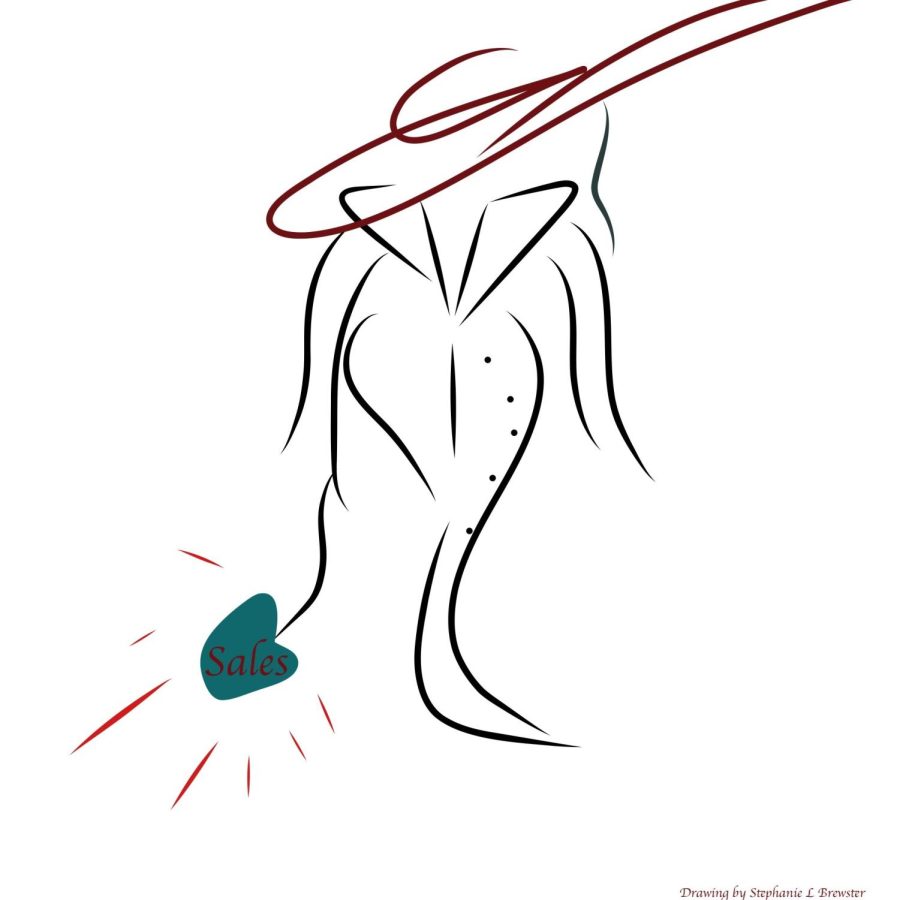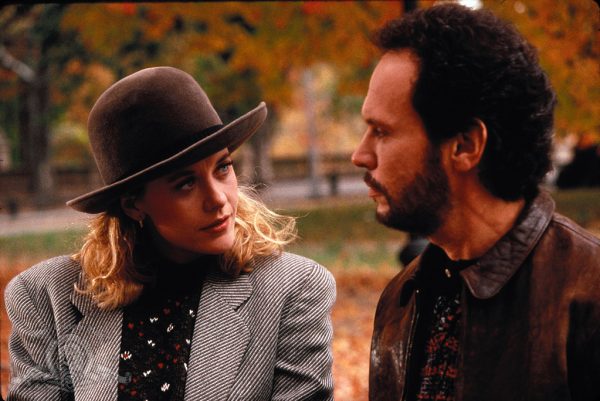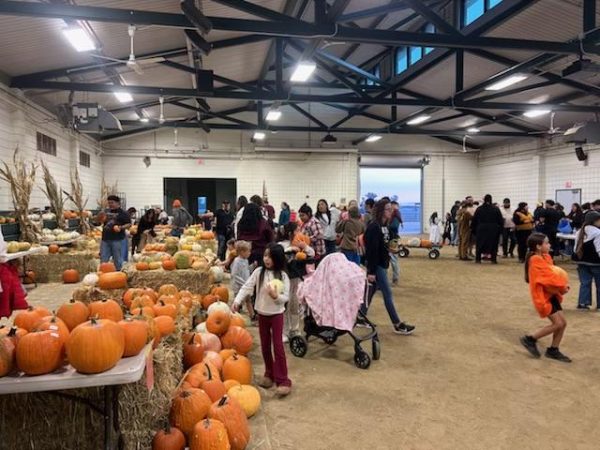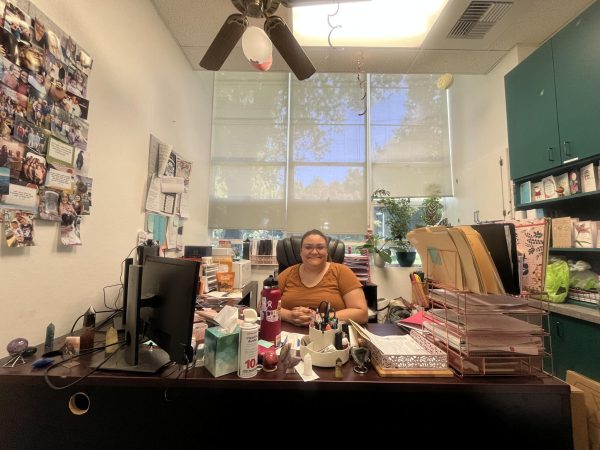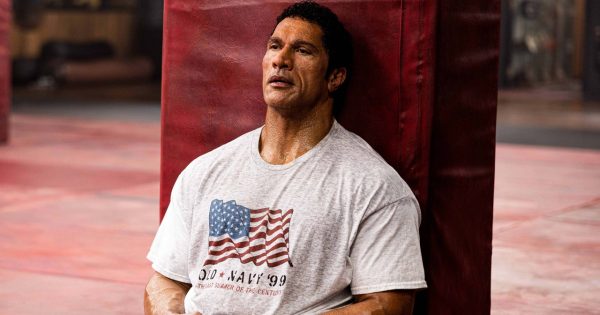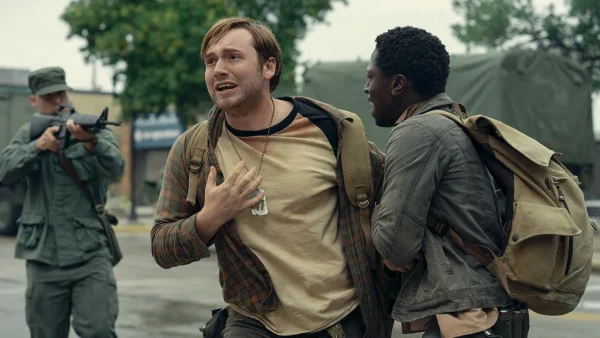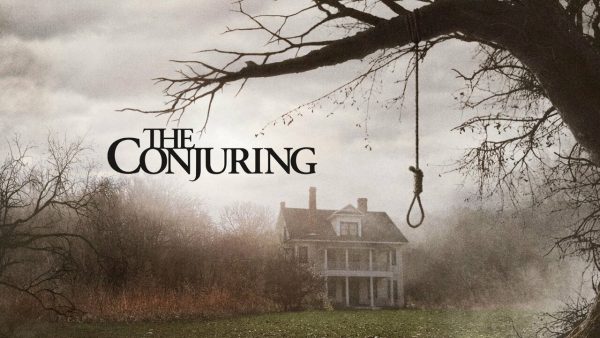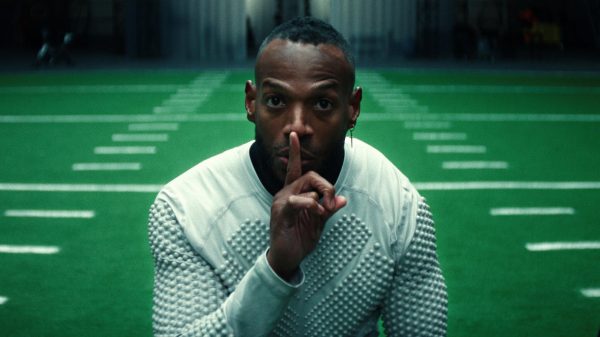Meet The Fashion Experts
Meet fashion experts Tiffany Wainwright and Maryland Chanel. Wainwright and Chanel can be described as flamboyant and creative, and both are forces to be reckoned with them understanding the “ins and outs” of fashion knowledge. Meet the expert de la mode, Tiffany Wainwright, and Maryland Chanel.
Transcript of interview with Tiffany Wright
Brewster: Tiffany Wright, tell us a little bit about yourself so everyone can know who you are and a little bit about your background.
Wright: Sure. I’ve been teaching here, and this is my 14th year.
Brewster: Impressive.
Wright: I was here as an adjunct for many years. We never had a full-time faculty in fashion. And we pushed for it for ten years and finally got it through, so this is my fourth year as a full-time faculty member for a technique that is enormous for our department since we haven’t had anyone full-time. And we currently have five other adjuncts, and we’ve expanded the program like three times what it used to be, always running on to adjuncts. We have lots of courses. We teach a lot of dual enrollment. And now, in several different high school learning classes, which is exciting.
When I was in high school, we had a fashion at most high schools because I grew up here. I started teaching here; there wasn’t all the fashion that was gone; they took away all the home neck classes, so we’re starting to bring that back with our dual enrollment. It’s been exhilarating for me, but also to get students, you know, excited in high school and then to come here to COS and continue and take our program and get our certificate.
I grew up here and graduated from Redwood High School. I took fashion at Redwood my junior year and realized, yeah, that’s what I want to do. And so my senior year, I came to CLS and I took a fashion illustration class from Deb Campbell and realized, okay, I want to go into merchandising. I applied to Cal State Long Beach, got my degree there, and worked in the industry. I worked for a limited corporation for several years. And then later got married and returned to Valley to have, you know, my family and I have four children. And I got hired here like I said, about 14 years ago to teach fashion and just really concentrate on growing the program. I rewrote all the classes so that it mirrors Cal State Long Beach. Almost all of our courses are CSU transferable, so if those students move on to a four-year program, these classes will move on with perfect results.
Brewster: What was the inspiration behind getting into the fashion industry, specifically this brand of fashion?
Wright: Well, I just fell in love with it when I took it in high school, and I just knew that I was always on the creative side. I love clothing. I loved putting outfits together. And so once I took the class in high school and then again took it at CLS, I knew that was the path I wanted to go and then got into Cal State Long Beach, which had a fantastic program. I had some great internships just an avenue out of college in the personal shopping area at Saks Fifth Avenue at Costa Mesa. And that was fun, helping to put on fashion shows for them. I also worked for a small baby store, and I got to go to the market and do buy, so I got my hands kind of into buying. That was a fun experience, and then I started working for the limited Corporation. For several years I worked in California and the Bay Area, all up and down the southern hand. Very few are all I was all over all.
Brewster: Do you have a design or anything? Did you want to do a show?
Wright: I didn’t do the design. So basically, you go into the design aspect, the sewing, drawing making, or the business-marketing steps of designing. I did more of the business side. There are two pathways: design and merchandising, so my background is in merchandising.
Brewster: What is your advice for anyone that wants to go into the field of fashion?
Wright: Take a few classes because you never know until you start taking classes. Then do as many internships as possible and different internships because, as I said, I worked for a mom-and-pop children’s store in California, so I got to do everything there because my husband and wife owned it. They didn’t have any fashion background, so I got to shop with them. I got to do merchandising. I got to know the retail product and the apparel and price it because that’s a whole other area. Yeah, learning how to price the merchandise. You know what you’ll put it on sale for and decide what you’ll make from that markup. I did all the visual merchandising for the store, so I got to do every aspect when I worked for a small store. There are only a few of you, so you’d have to have many hats. And then when I worked for Saks Fifth Avenue, a giant retail department store with very different types of retail. You have very high-end clothing and very high-end customers. It is different for me from living in Visalia, where we don’t have a giant department store like that.
I worked with personal shopping, and we had the most elite customers coming in, and we swept them back into this closed room that was this beautiful individual dressing room. We would bring them lunch; we would cater to every knee they might have, and we choose to clothe, and they try it on, and we’d be there just servicing them one on one, so that was incredible. And then, I also got to help put on fashion shows to highlight different designers in their stores. Choosing models again is headshots, you know, being there for the actual event, which is the hustle and bustle all day long, and it’s amusing because it’s enjoyable, lots of work, but fun to put on a fashion show. And then I also helped with a little bit of the marketing for that store. So that was, you know, also exciting to see the different types of marketing ads that they put in before social media, so it’s, I’m sure, paper.
A lot of people are not going to understand that they want to see that. And then I started working for the limited because, in the 1990s, that was like one of the biggest retail stores they owned. You know Victoria’s Secret, Lane Bryant Lerner Express Bath, and Body Cacique, a vast company. I chose that company to work for because of their range, and I knew that if I didn’t like the limited or didn’t look in that category, I could move into different areas. I managed those stores in California for several years. The designers out there are the most important. Oh, I can’t pick one. That’s like picking a child. There are so many, and they all are so different. And I mean, I see it as like walking into an art gallery. How would you pick one favorite you can because they’re there? They all are different and unique, and enjoyable. And they all speak something different. I enjoy looking at all the various designers, old designers, and new designers. Because again, to me, it’s art, so I just love to see, you know, what they produce and how they produce it and the flair of that person.
Brewster: Does anyone, for future reference, for example, want to own a clothing store? What would you say to them?
Wright: Well, it goes back to those internships, like either getting training or working for someone to find a successful person running a business that you would like yours to look like and work for them Because that’s the best way. Why reinvent the wheel? Find someone that is successful that you can learn from, and you don’t have to make those same mistakes they may have. They’ll teach you how to do it the right way. And you always have someone you can look at and decide, you know, what, what area you want to go into because you’re, you know, your work, you’ve already worked for them, and you’ve already seen their structure. I think that would be the best thing. Also, working for several different companies may be the ones that you want to have. And then that would give you the experience to open your own. Well, thank you for being so welcoming and for allowing me to. Yeah, we have lots of courses and teach a lot of dual enrollment to say we’re unique.
Transcript of interview with Maryland Chanel
Brewster: Maryland Chanel, tell us a little about yourself and how you entered the fashion industry.
Chanel: I went through all the sewing classes I could take in high school and then went to college and studied fashion design at Washington State University. Then took another course of study, which led to a job in the garment industry. Working for a sportswear manufacturer as an assistant designer and assistant to the assistant, I worked there for about six or seven years. Through various positions, I worked to make my way up to children’s wear designer.
Brewster: Do you have a favorite or memorable moment when you were doing any fashion designs for a company?
Chanel: I worked for a sportswear manufacturer, so they did a lot of activewear and beach-type wear and things like that. And when my favorite part of the job was that we got to pick colors every season that we would go into the line. Still, we also got to design textiles, so we got to design stripes, and we would sit and cut the fabric into little strips and put them on paste-up paper. Create stripes that would go to the manufacturers, so we can design stripes in our fashion-forward colors and have a monk work together as a collection.
Brewster: When you have a moment when you can’t think of an idea, what do you do to get creative?
Chanel: Well, my career went from the fashion industry to the film industry. I’ve always been a film lover. So for me, I look to history. I look to historical costumes and periods that inspire me. Like I love the 40s, I love the 20s. For me to be able to look at historical fashion period historical costumes as well as the art during those periods and how it all tied together.
Brewster: The history that you have. Do you have a favorite of your own?
Chanel: My wedding dress. Of course, yeah. My wedding. Dress. Yes. Yeah, because I’m a builder. I make patterns, and I build things. Yes. Can you describe what it looked like? Oh, it was so 1990, like it was super slim mermaid style, with a skirt. A 20-foot-long train came off in the back and had silk foreplay. It had these drapey sleeves and a natural low back. But the fabric was quite simple, it had just simple lace with some beads on it, but it was a mashup of all my favorite things. But it was very 90’s.
Brewster: Did it take you long to design your wedding dress?
Chanel: Not really. I had the bridesmaid dresses the day before the wedding. I made my dress, the bridesmaids, my husband’s shirt, and Spats for him, and homemade. Yeah, I did the whole thing.
Brewster: What got you all to migrate?
Chanel: I went from the fashion industry to specialty costumes and building superheroes. Yeah, animals, dinosaurs, bears, etc. I was trying to figure out a way to kind of find something that was a little calmer. Something a little bit more than I can give back and teach kids because when I got started in the film industry. I hope to bring something a little different with my entertainment industry background and help show that there are so many choices.
Brewster: Who is your influencer? Who was your most motivator to continue with fashion?
Chanel: That’s a hard one. It was so long ago. I have to say one of my favorite designers back when I was Issei Miyake, and he’s a Japanese designer. And he did amazing things which went more along the costume route. He did high fashion, but everything was very draping and intricate, and all his patterns were terrific. And I love complicated pattern making and designs. Yeah, and very, very, very Japanese. And sensibility where it was very, there was a lot of origami and a lot of draping and folding and fascinating pattern work and his, his blades are—he and Kenzo. And there were several influential European designers at the time. I could go on Terry McClure and Sean Volga TA, but there were many exciting design perspectives. Wow.
Brewster: With these moods, can you get more in detail on these boards?
Chanel: Well, a mood board is just. It takes the students interested in color and style, and they like a collage of your design aesthetic. It’s understanding elements of mine and form and color and, you know, the essential aspects of design taking that and creating a board that has a cohesive feeling. And so that when you look at it, you can see the designer’s aesthetic or sensibility from it. Oh, as I said, they’re not all designers, but they can all put down what they like.
Brewster: What advice would you give to those who want to take the fields that you have?
Chanel: Well, I would say, to find a destination as far as you know, there are places where you can do fashion successfully. There’s a lot more now with online companies and things like that. But you need to find a place and focus on a particular specialty if you will, so don’t try to do it all. You know if there’s one thing you can focus on, bridal wear, menswear, sportswear, or whatever to find. Take as much information as possible, whether in technical classes or learning the basics of pattern making, draping, and sewing, because many designers don’t know that. They’re not nearly the successful ones who know how things are put together. Even learning the nuts and bolts, I think, is essential.

